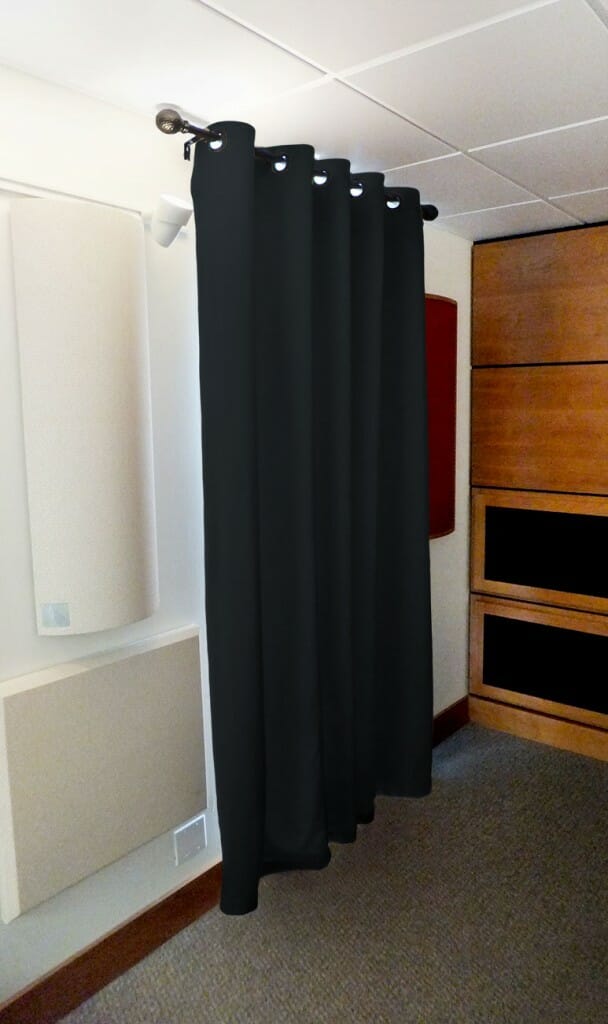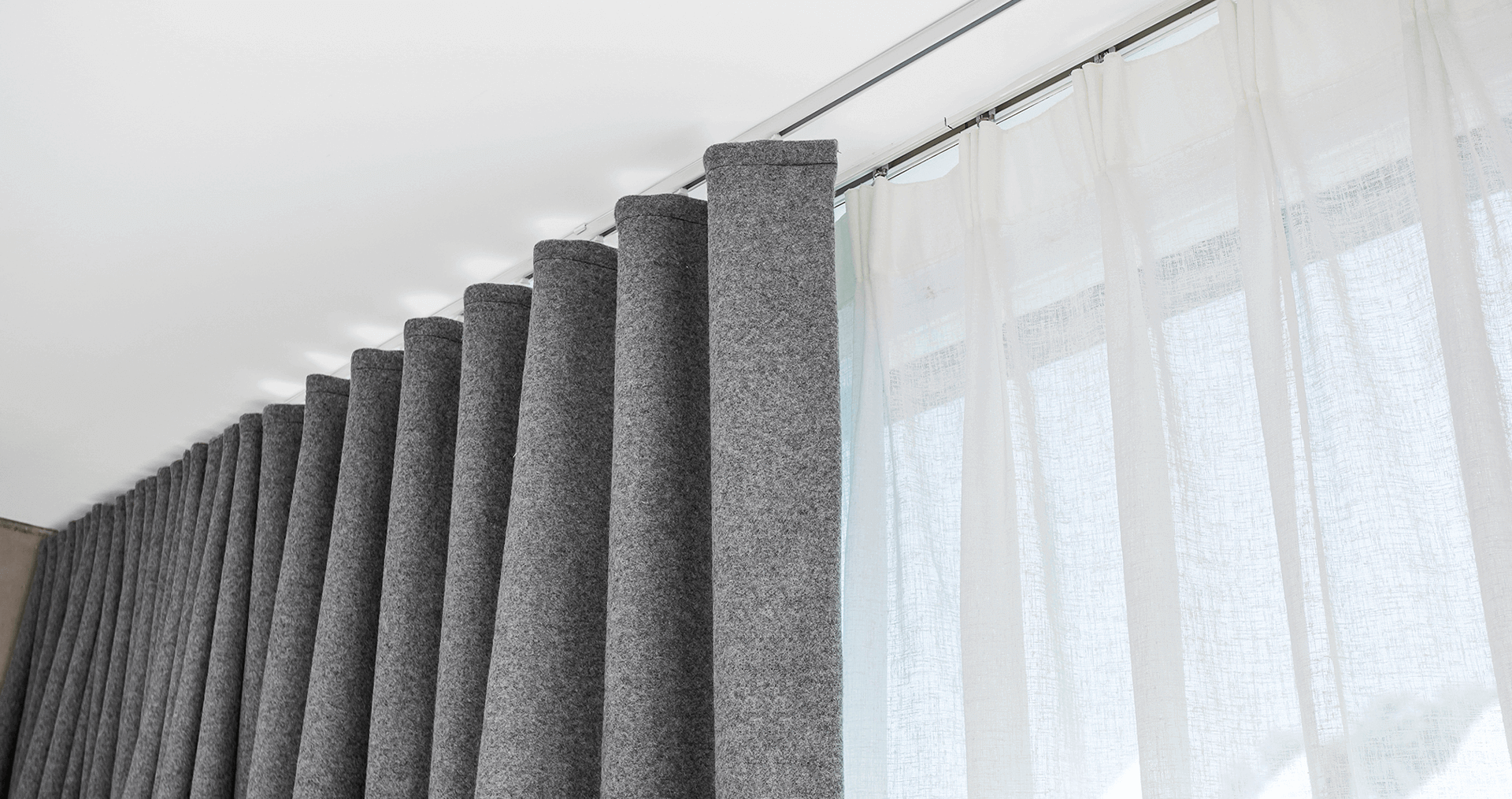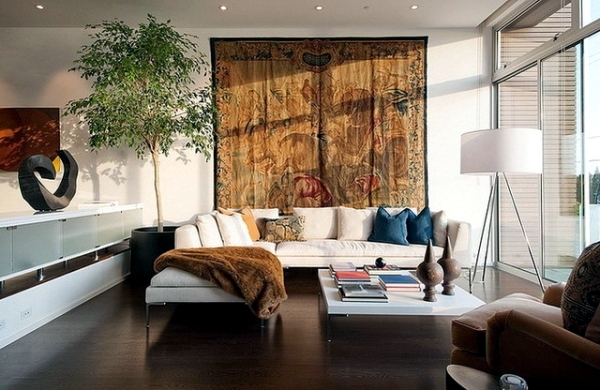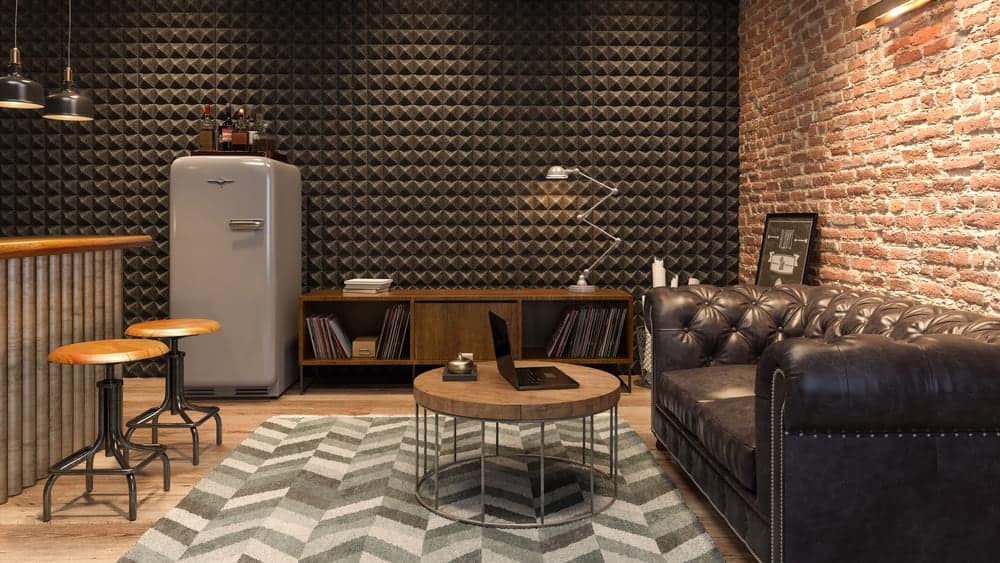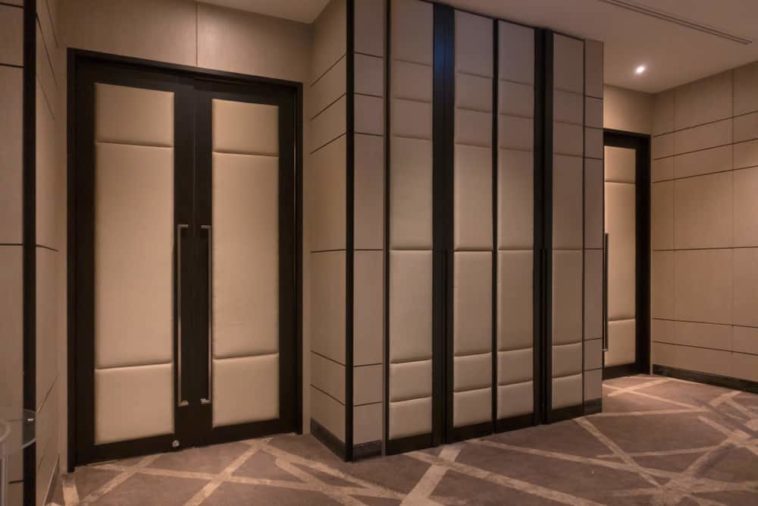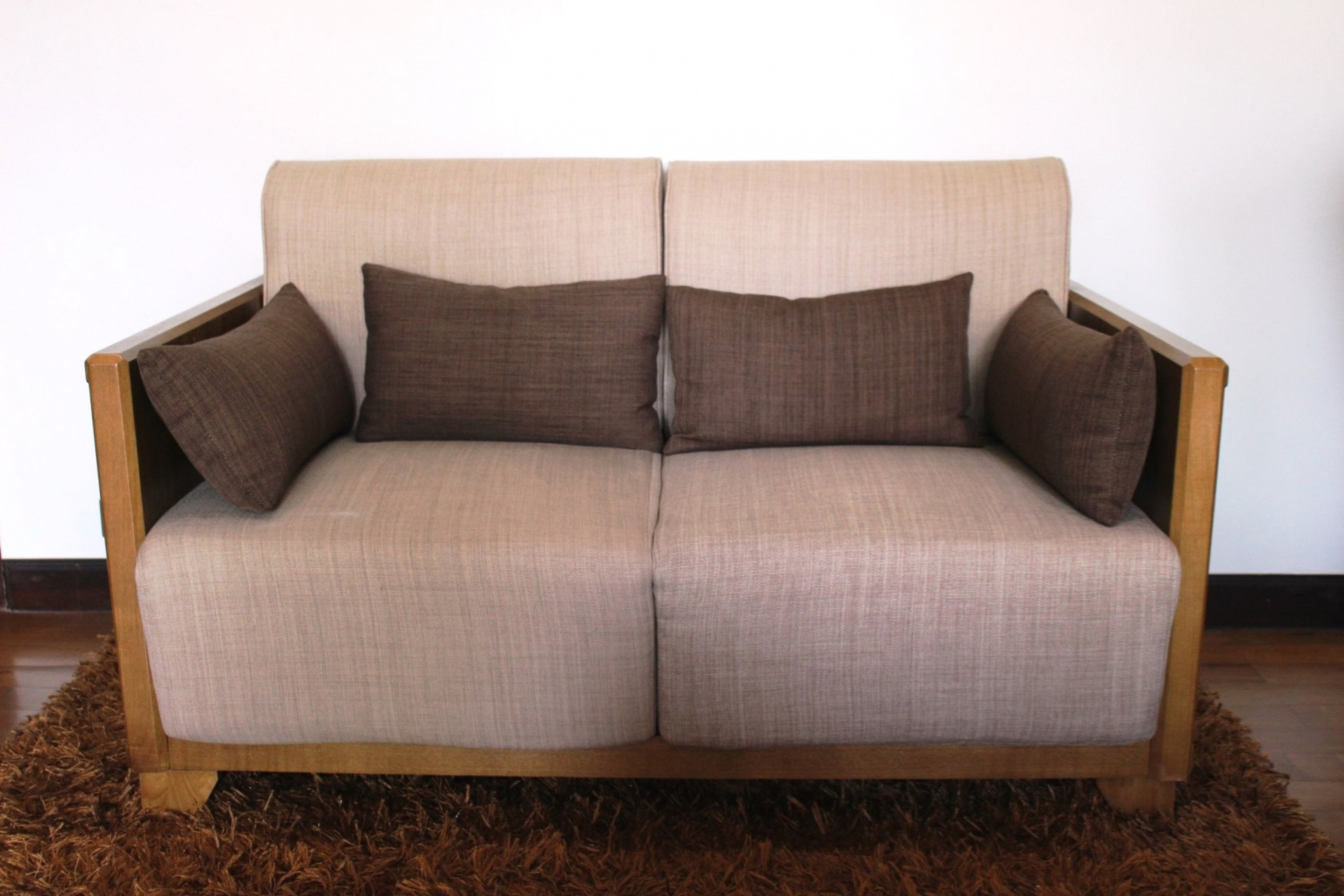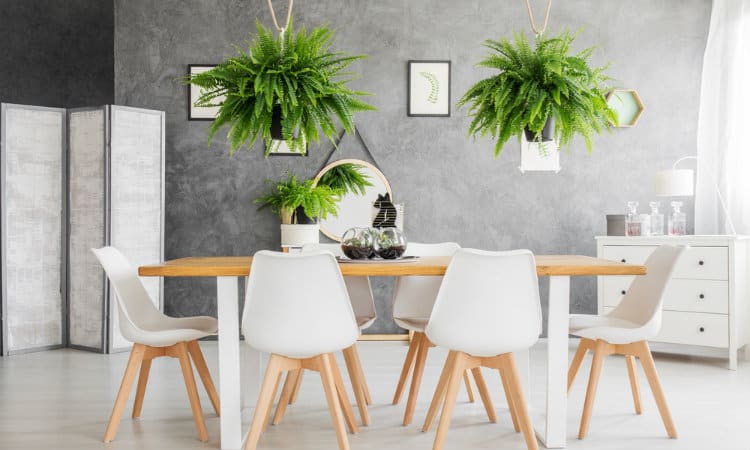Living rooms are often the central gathering place in a home, where family and friends come together to relax, watch TV, or have conversations. However, all of this activity can also create a lot of noise, making it difficult to hear or have a peaceful environment. This is where acoustic panels come in handy, as they are designed to absorb sound and reduce echoes in a room. Not only do they improve the overall sound quality in a living room, but they also add a touch of style to the space. There are various types of acoustic panels to choose from, including fabric-wrapped, foam, or wood. Each type has its own unique sound-absorbing properties, so it's important to do some research and choose the one that best fits your needs and style. Additionally, some acoustic panels are designed to be hung on walls, while others can be freestanding or even mounted to ceilings. Investing in acoustic panels for your living room can make a significant difference in the overall sound quality of the space, creating a more comfortable and enjoyable environment for everyone.Acoustic Panels for Living Room Sound Absorption
Curtains are not just for decoration, they can also serve as a practical solution for sound absorption in your living room. Sound-absorbing curtains are made with special materials that are designed to absorb sound waves, reducing noise and echoes in a room. They are also a great option for those who want to add a touch of style to their living room while also improving its acoustics. When choosing sound-absorbing curtains, look for ones made with heavy, dense fabrics such as velvet, suede, or wool. These materials are great for absorbing sound and reducing noise levels. Additionally, consider getting curtains with multiple layers or adding a thick lining to your existing curtains for added sound absorption. Not only do sound-absorbing curtains improve the acoustics of your living room, but they also have the added benefit of providing insulation, keeping your home warm in the winter and cool in the summer.Sound Absorbing Curtains for Living Room
If you want to take your sound absorption to the next level, consider soundproofing your living room. Soundproofing involves creating a barrier between your living room and the outside world, reducing the amount of noise that enters and exits the room. This can be especially beneficial for those who live in loud urban areas or have noisy neighbors. There are several ways to soundproof a living room, such as adding insulation to the walls, installing soundproof windows, or sealing gaps and cracks. You can also invest in soundproofing materials, such as soundproofing foam or curtains, to further reduce noise levels. While soundproofing may require a bit more effort and investment, it can greatly improve the overall sound quality in your living room.Living Room Soundproofing Solutions
Who says sound-absorbing materials have to be boring? Sound-absorbing wall art is a stylish and creative way to improve the acoustics of your living room. These pieces of art are designed with sound-absorbing materials, such as foam or fabric, and can be hung on walls just like regular artwork. Not only do sound-absorbing wall art pieces help reduce noise and echoes in your living room, but they also add a personal touch to your space. You can choose from a variety of designs and styles to match your home's decor and personality. Some sound-absorbing wall art pieces even allow you to customize the design and material, giving you complete control over the aesthetics and sound-absorbing properties.Sound Absorbing Wall Art for Living Room
One of the most popular and effective sound-absorbing materials is foam. This versatile material comes in various shapes and sizes and can be easily attached to walls, ceilings, or even furniture. Sound absorption foam is designed to absorb and dampen sound waves, reducing echoes and creating a more comfortable and peaceful environment. When using sound absorption foam in your living room, it's important to strategically place it in areas where sound tends to bounce, such as near windows or in corners. This will help improve the overall sound quality in the room and create a more balanced and pleasant listening experience. Additionally, foam is a relatively affordable sound-absorbing solution, making it a great option for those on a budget.Living Room Sound Absorption Foam
If you have an open-concept living room or want to create separate areas within the space, sound-absorbing room dividers can be a great option. These dividers are designed with sound-absorbing materials, such as foam or fabric, and can be easily moved and adjusted to create different configurations in your living room. Not only do sound-absorbing room dividers provide privacy and separation in a living room, but they also help reduce noise and improve the acoustics of the space. They are also a great option for those who live in smaller apartments or homes and want to create a designated area for activities such as studying or working.Sound Absorbing Room Dividers for Living Room
It may seem surprising, but rugs can also serve as sound-absorbing materials in a living room. Thick, plush rugs made with materials such as wool or cotton can help absorb sound waves and reduce noise levels in a room. They are especially effective in rooms with hard flooring, such as tile or hardwood, which tend to create more echoes. When choosing a sound-absorbing rug for your living room, look for ones with a thick pile and dense materials. You can also layer rugs for added sound absorption and design. This not only improves the acoustics of the room but also adds warmth and coziness to the space.Living Room Sound Absorption Rug
Furniture is another unexpected but effective way to absorb sound in a living room. Upholstered furniture, such as sofas and armchairs, can help absorb sound waves and reduce noise levels. Additionally, furniture with a lot of soft surfaces, such as pillows and cushions, can also help absorb sound and improve the acoustics of a room. When choosing sound-absorbing furniture for your living room, opt for pieces with thick padding and fabrics that are designed to absorb sound. You can also add decorative pillows or throws to your existing furniture to further improve the sound quality in the room.Sound Absorbing Furniture for Living Room
Similar to acoustic panels, sound absorption panels are designed to absorb sound and reduce echoes in a room. They are typically made with fabric-wrapped materials and can be easily hung on walls or mounted to ceilings. Sound absorption panels are a great option for those who want a more subtle and discreet sound-absorbing solution for their living room. They also come in a variety of sizes and designs, allowing you to choose the ones that best fit your space and style.Living Room Sound Absorption Panels
Plants not only add beauty and life to a living room, but they can also serve as natural sound absorbers. Certain plants, such as rubber plants, fiddle leaf figs, and peace lilies, are known for their sound-absorbing properties and can help reduce noise levels in a room. When choosing sound absorbing plants for your living room, consider ones with large, broad leaves, as they tend to be more effective at absorbing sound. You can also create a mini indoor garden by strategically placing plants around the room, not only improving the acoustics but also adding a touch of nature to your space. In conclusion, there are various sound-absorbing solutions available for living rooms, each with its own unique benefits and style. By incorporating these solutions into your living room, you can create a more comfortable and enjoyable environment for all your activities and gatherings.Sound Absorbing Plants for Living Room
The Importance of Sound Absorbers in Your Living Room Design

Enhancing Your Living Room Space
 When designing your living room, it's important to consider not only the aesthetics but also the functionality of the space. One crucial aspect of a well-designed living room is the acoustics. A room with poor acoustics can be a major source of frustration, leading to echoes, reverberations, and an overall unpleasant listening experience. This is where sound absorbers come in.
Sound absorbers
, as the name suggests, are materials that absorb sound rather than reflecting it. They are essential in creating a peaceful and enjoyable living room environment. Without proper sound absorption, you may find yourself struggling to hear conversations, or worse, dealing with constant noise pollution from outside your home.
When designing your living room, it's important to consider not only the aesthetics but also the functionality of the space. One crucial aspect of a well-designed living room is the acoustics. A room with poor acoustics can be a major source of frustration, leading to echoes, reverberations, and an overall unpleasant listening experience. This is where sound absorbers come in.
Sound absorbers
, as the name suggests, are materials that absorb sound rather than reflecting it. They are essential in creating a peaceful and enjoyable living room environment. Without proper sound absorption, you may find yourself struggling to hear conversations, or worse, dealing with constant noise pollution from outside your home.
How Sound Absorbers Work
 Sound travels in waves
, and when it reaches a surface, it can either be reflected or absorbed. When sound is reflected, it bounces off the surface and can cause echoes and reverberations. On the other hand, when sound is absorbed, it is trapped by the material, reducing the amount of sound energy in the room. This is why adding sound absorbers to your living room can greatly improve the acoustics.
Sound travels in waves
, and when it reaches a surface, it can either be reflected or absorbed. When sound is reflected, it bounces off the surface and can cause echoes and reverberations. On the other hand, when sound is absorbed, it is trapped by the material, reducing the amount of sound energy in the room. This is why adding sound absorbers to your living room can greatly improve the acoustics.
Choosing the Right Sound Absorbers
 There are various types of sound absorbers
available, each with its own level of efficiency. The most common types include foam panels, fabric-covered panels, and acoustic ceiling tiles. When choosing the right sound absorbers for your living room, it's important to consider the size and layout of the room, as well as the type of sound you want to eliminate.
There are various types of sound absorbers
available, each with its own level of efficiency. The most common types include foam panels, fabric-covered panels, and acoustic ceiling tiles. When choosing the right sound absorbers for your living room, it's important to consider the size and layout of the room, as well as the type of sound you want to eliminate.
Maximizing the Benefits of Sound Absorbers
 Aside from improving the acoustics in your living room
, sound absorbers also have other benefits. They can help reduce outside noise, making your living room a peaceful sanctuary. They can also improve the sound quality of your entertainment system, making movie nights and music listening more enjoyable. Additionally, sound absorbers can add a touch of style to your living room, as many of them come in unique designs and colors.
In conclusion,
adding sound absorbers to your living room design is a must
. Not only do they enhance the acoustics, but they also improve the overall functionality and atmosphere of the space. So, if you want to create a perfect living room that is both aesthetically pleasing and acoustically sound, don't forget to include sound absorbers in your design plan.
Aside from improving the acoustics in your living room
, sound absorbers also have other benefits. They can help reduce outside noise, making your living room a peaceful sanctuary. They can also improve the sound quality of your entertainment system, making movie nights and music listening more enjoyable. Additionally, sound absorbers can add a touch of style to your living room, as many of them come in unique designs and colors.
In conclusion,
adding sound absorbers to your living room design is a must
. Not only do they enhance the acoustics, but they also improve the overall functionality and atmosphere of the space. So, if you want to create a perfect living room that is both aesthetically pleasing and acoustically sound, don't forget to include sound absorbers in your design plan.












